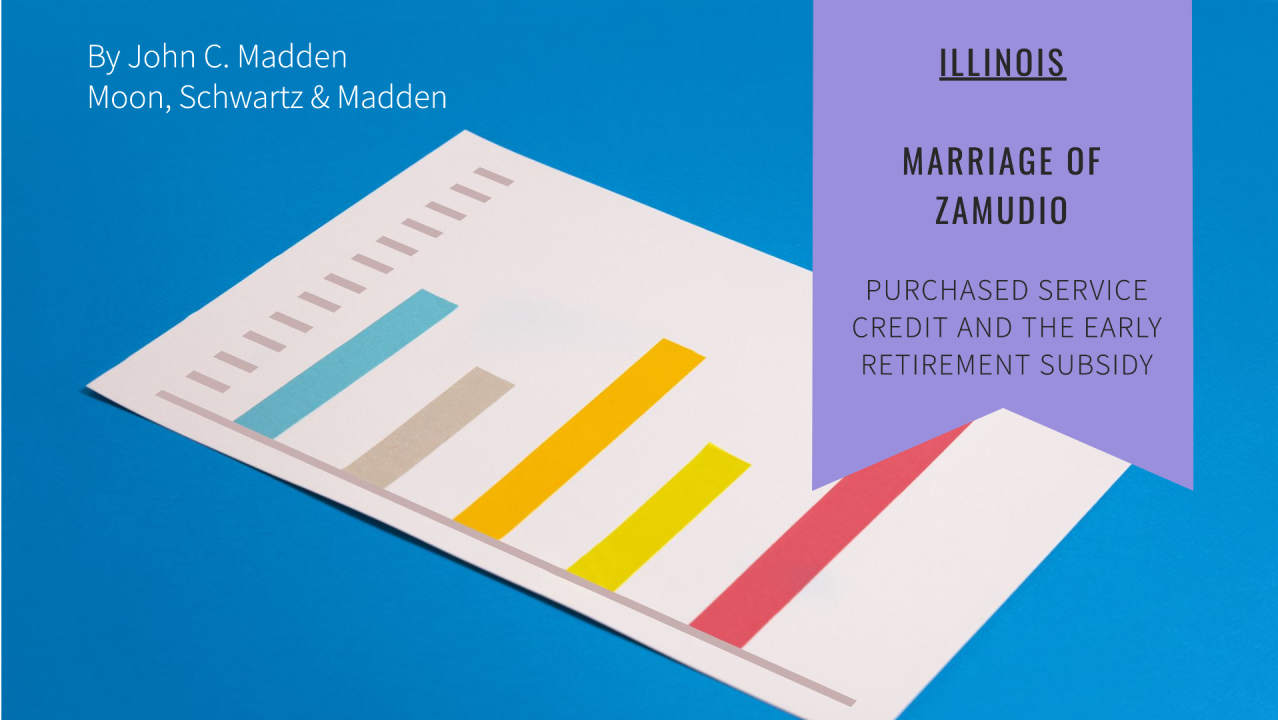
A closer look at In Re Marriage of Zamudio and the potential impact on the allocation of early retirement subsidies in divorce (PART I) (In Re Marriage of Zamudio, 2019 IL 124676)
A closer look at In Re Marriage of Zamudio and the potential impact on the allocation of early retirement subsidies in divorce (PART I) (In Re Marriage of Zamudio, 2019 IL 124676)
This article discusses the potential impact on the allocation of an early retirement subsidy when valuing and/or dividing a defined benefit plan in divorce.
Understanding Purchased Service Credit and the Division of Early Retirement Subsidy
When navigating the complexities of pension plans, particularly during divorce or separation, two significant concepts often arise: (1) purchased service credit and (2) early retirement subsidies. Understanding these elements is crucial for ensuring fair and equitable distribution of retirement benefits.
Purchased Service Credit (Regular or Permissive)
Purchased service credit refers to the ability of employees to buy additional years of service for pension purposes. This often applies to individuals who want to enhance their retirement benefits by purchasing credit for past service, military service, or other eligible periods of permissive service (40 ILCS 5/1-119(5.5),(7.5)). Purchasing additional service credit can significantly boost retirement benefits, often leading to increased monthly pensions or eligibility for early retirement.
Division of Early Retirement Subsidy
An early retirement subsidy is a financial benefit offered by pension plans to its members who retire before reaching the normal retirement age. This subsidy is designed to provide a financial incentive for earlier retirement, often resulting in increased monthly pension payments. One such early retirement subsidy is the “30 and out” provision offered by many public and private retirement plans around the country. This provision allows a member to retire early without reduction if they have accrued 30 years of service (variations such as the “Rule of 85” and similar provisions also include an early retirement subsidies). If a member’s purchase of additional optional/permissive years result in their meeting the “30 and out” threshold, the benefit can be payable immediately without reduction for early retirement (i.e. the subsidy). Enter the Zamudio and Hunt cases…
Marriage of Zamudio and Ochoa, 2019 IL 124676 & Marriage of Hunt, 78 Ill. App. 3d 653, 397 N.E.2d 511 (Ill. App. Ct. 1979)
In summary, the Zamudio case determined that if additional years of service credit are purchased during marriage, regardless of when the years may have been attributable, the purchased years are marital property. But what if the addition of the purchased years now puts the participant over the “30 and out” threshold?
In my next article (Part II), I will dig into how the Zamudio case may alter the typical “Hunt” formula for characterization of an early retirement subsidy…stay tuned!
If you have any questions on the valuation of any Illinois public retirement system, or the need for a non-marital tracing in a defined contribution plan such as a 401(k), please feel free to contact me at [email protected].

